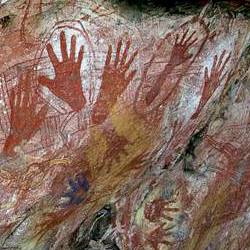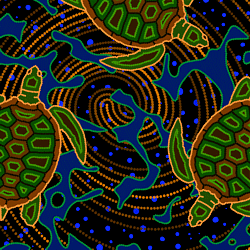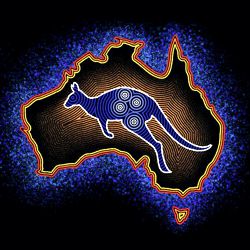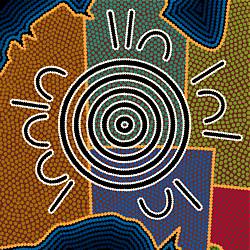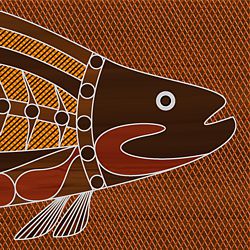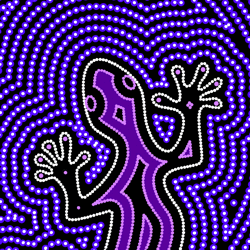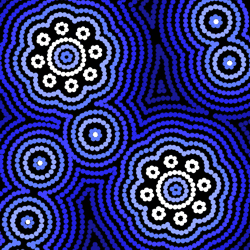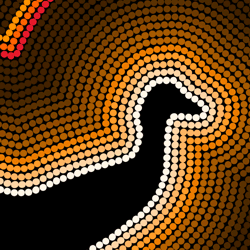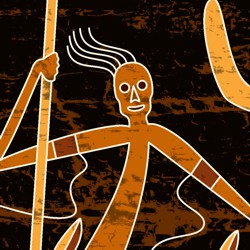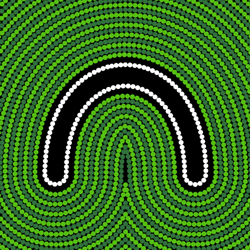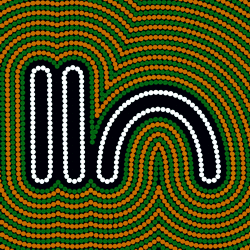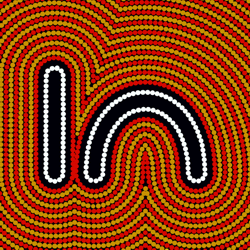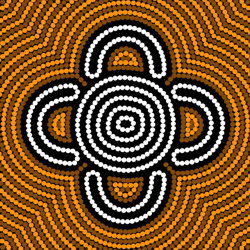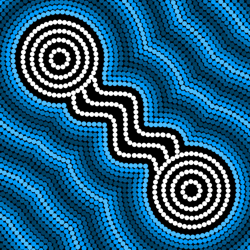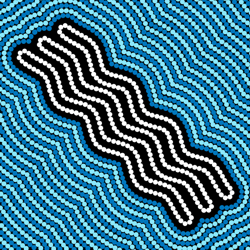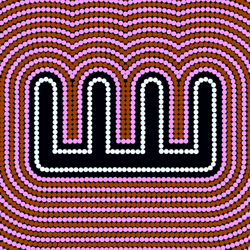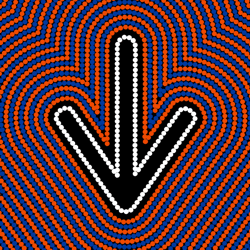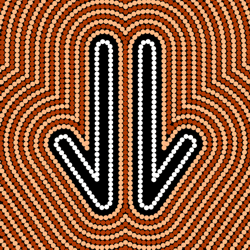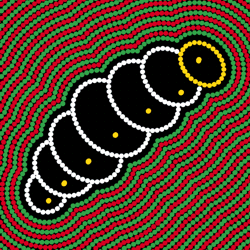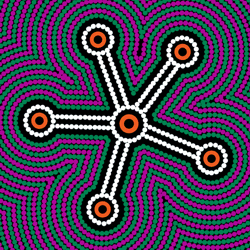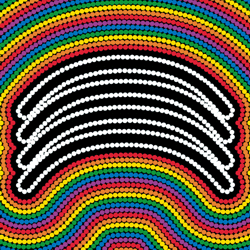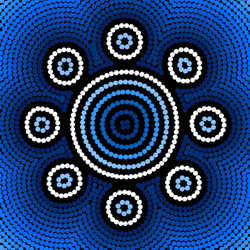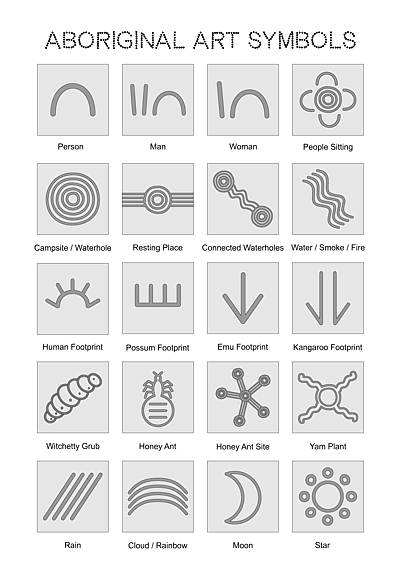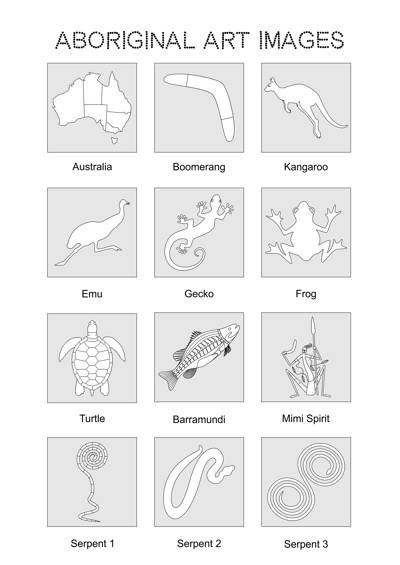Aboriginal Art - Indigenous Australian Culture
Our pages on Aboriginal Art introduce the main elements of indigenous Australian art, the longest continuous artistic tradition in the world.
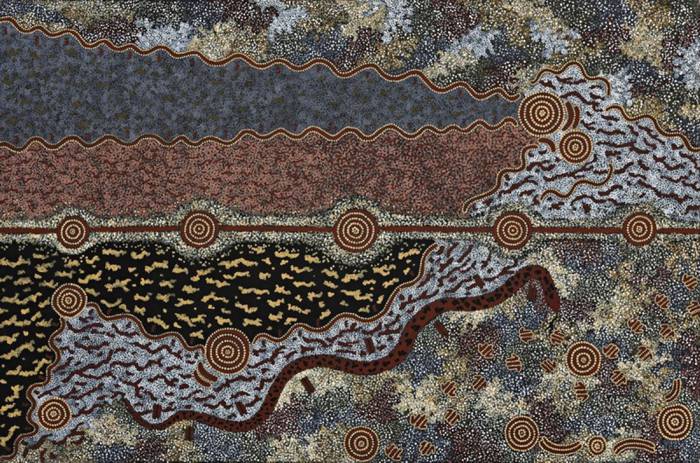
MICHAEL NELSON TJAKAMARRA (b.1948)
'Five Stories' 1984 (synthetic polymer paint on canvas)
© Michael Nelson Tjakamarra
Aboriginal Art is the longest continuous artistic tradition in the world, stretching back generation after generation for over thirty millennia. It preceded all the great civilizations and survived as each of them faded. From the 18th century it endured the colonisation, marginalisation and oppression of the British Empire, yet still managed to prevail in the 21st century as the only notable Australian art movement to register on the international stage. Unlike the art movements of the west which have a limited timeline, Aboriginal art continues to evolve by drawing on a range of styles and techniques that link the past to the present through a visual tradition founded on the cultural stories from 'The Dreaming'.
Aboriginal Art plays a major role in keeping indigenous culture alive. It is a powerful educational tool that operates on many levels: it can be a reference manual for survival in the bush, a record of historical events, a code of cultural behaviour, a guide to spiritual knowledge, or a map or title deed for a specific territory. Whatever its meaning, it reinforces the holistic values of Aboriginal life that are suppressed by the modern world and offers an honorable identity that helps to inspire a sense of community, both in Australia and around the world.
Aboriginal Art Styles
Aboriginal Australians have an oral and visual mode of communication. Dreaming stories were often illustrated with sand drawings as they were narrated. More permanent examples of this practice are documented in the imagery and techniques of:
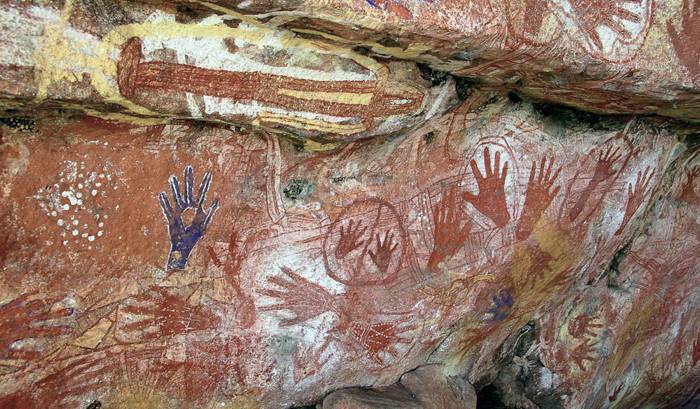
Aboriginal Rock Art - Hand Stencils
Mt. Borradaile, Arnhem Land, Northern Australia
Aboriginal Rock Art is the earliest form of indigenous painting. Some of the examples found in Arnhem Land can be dated back 28,000 years. These rock paintings uniquely record the activity of indigenous artists from prehistoric times up to the present day as succeeding generations painted alongside and over the work of their ancestors.

CURLY BARDKADUBBU (c.1924–1987)
'Namarnkol, The Silver Barramundi', c.1980 (earth pigments on Stringybark (Eucalyptus Tetrodonta)
National Gallery of Victoria, Melbourne
Aboriginal Bark Paintings were not originally painted as art objects. They were designed as ceremonial objects for use in social and religious rituals. When the 19th century explorers and anthropologists first saw these 'artworks' (through their western-tinted aesthetic spectacles) they recognised a product that could be adapted for sale to collectors in the cities. For better or for worse, this was the indigenous artists' introduction to the commercial art market.
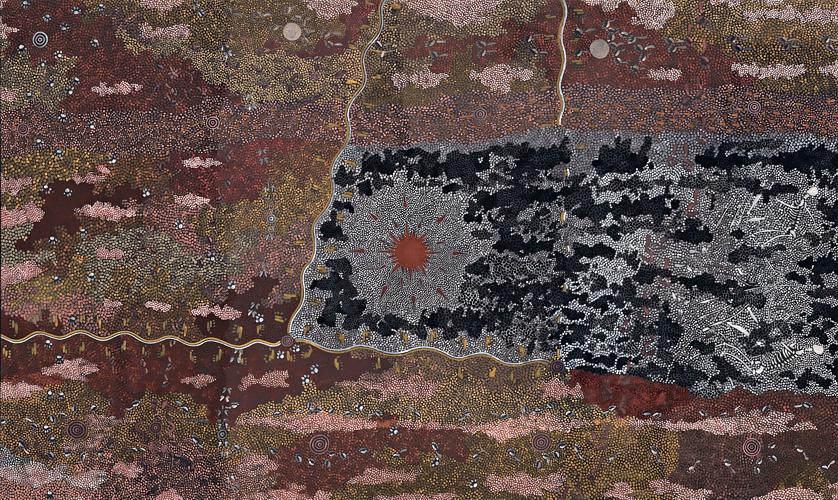
CLIFFORD POSSUM TJAPALTJARRI (1932-2002)
'Warlugulong' 1977 (synthetic polymer paint on canvas) c.6.5ft X 11ft
© Estate of Clifford Possum Tjapaltjarri
Aboriginal Dot Painting is the characteristic style of modern indigenous Australian art but its imagery retains its roots in traditional Aboriginal culture. The catalyst that changed the conventional vision of indigenous artists was the introduction of modern synthetic paints on canvas. These new polymer paints offered artists a wider choice of colors than their natural ochre palette. The flexible quality of polymer pigments on canvas allowed them to increase of the scale of their work and roll it up for transportation and exhibition outside their community.


